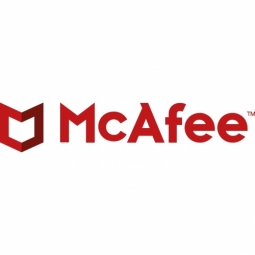Customer Company Size
Large Corporate
Region
- America
Country
- United States
Product
- Skyhigh for Shadow IT
Tech Stack
- Cloud Services
- Active Directory
Implementation Scale
- Enterprise-wide Deployment
Impact Metrics
- Cost Savings
- Productivity Improvements
Technology Category
- Cybersecurity & Privacy - Cloud Security
Applicable Industries
- Cities & Municipalities
Applicable Functions
- Business Operation
Use Cases
- Cybersecurity
Services
- Cloud Planning, Design & Implementation Services
About The Customer
Maricopa County is the largest county in the state of Arizona and the fourth largest in the United States. The county has a population of over 3.8 million and employs over 15,000 people. The county has a vast network of users and a sophisticated infrastructure. The Chief Information Officer for Maricopa County is David Stevens, who wanted to fully understand and govern where their data is going and who had access to it, as it is essential to maintaining the agency’s security.
The Challenge
Maricopa County, the largest county in Arizona and the fourth largest in the United States, faced several challenges in managing its vast network of users and data. The county's Chief Information Officer, David Stevens, wanted to fully understand and govern where their data was going and who had access to it, as it was essential to maintaining the agency’s security. The county faced challenges such as insufficient blocking of malware and high-risk services due to proxy categorization of services based on URL. The county's vast existing infrastructure required frictionless integration across multiple solutions and business units for core functionality. Furthermore, the county lacked visibility into cloud use and risk, data access, and traffic.
The Solution
Maricopa County leveraged Skyhigh Networks’ FedRAMP certified CASB technology to add cloud governance and security to their existing, sophisticated infrastructure. The solution provided comprehensive tagging and blocking of malware and high-risk services, leading to an overall reduction in risk across the agency and the ability to enforce risk-based cloud governance policies. The solution seamlessly integrated with the county's existing infrastructure, increasing cloud intelligence and providing a better understanding of customer behavior. This helped reduce security risks while enabling customers and supporting the long-term IT strategy. The solution also enhanced visibility into cloud usage and traffic with customized access controls and cloud governance policies for multiple business units across the agency.
Operational Impact
Quantitative Benefit

Case Study missing?
Start adding your own!
Register with your work email and create a new case study profile for your business.
Related Case Studies.

Case Study
Turning A Stadium Into A Smart Building
Honeywell created what it called the “intelligent system” for the National Stadium in Beijing, China, turning the venue for the opening and closing events at the 2008 Summer Olympics into a “smart building.” Designed by highly controversial artist Ai Weiwei, the “Bird’s Nest” remains one of the most impressive feats of stadium architecture in the world. The 250,000 square meter structure housed more than 100,000 athletes and spectators at a time. To accommodate such capacity, China turned to Honeywell’s EBI Integrated Building Management System to create an integrated “intelligent system” for improved building security, safety and energy efficiency.
.png)
Case Study
Smart Street Light Network (Copenhagen)
Key stakeholders are taking a comprehensive approach to rethinking smart city innovation. City leaders have collaborated through partnerships involving government, research institutions and solution providers. The Copenhagen Solutions Lab is one of the leading organizations at the forefront of this movement. By bringing together manufacturers with municipal buyers, the Copenhagen Solutions Lab has catalyzed the development and deployment of next-generation smart city innovations. Copenhagen is leveraging this unique approach to accelerate the implementation of smart city solutions. One of the primary focus areas is LED street lighting.

Case Study
Buoy Status Monitoring with LoRa
The Netherlands are well-known for their inland waterways, canals, sluices and of course port activities. The Dutch Ministry of Infrastructure indicates that there are thousands of buoys and fixed items in and near water environments that would profit from IoT monitoring. One of the problems with buoys for example, is that they get hit by ships and the anchor cable breaks. Without connectivity, it takes quite some time to find out that something has happened with that buoy. Not to mention the costs of renting a boat to go to the buoy to fix it. Another important issue, is that there is no real-time monitoring of the buoys at this moment. Only by physically visiting the object on the water, one gains insight in its status.

Case Study
Barcelona Case Study
Barcelona’s heavy traffic and its associated high levels of pollution were the primary factors that motivated some companies and universities to work on strategies for improving traffic in the city centre. Bitcarrier is one of the technologies involved in the In4Mo Project, whose main objective is to develop the applications that form the core of smart mobility, one of the fundamental pillars of the smart city concept.

Case Study
China Mobile Smart Parking
Smart Parking, powered by NB-IoT technology, is making it easier for drivers to find free parking spots. Cities can better manage their parking assets and maximize the revenue available to them as a result. Drivers searching for parking create congestion and pollution by circling and hunting for available parking. Smart Parking services are able to significantly ease these problems by guiding a driver directly to a parking space.








